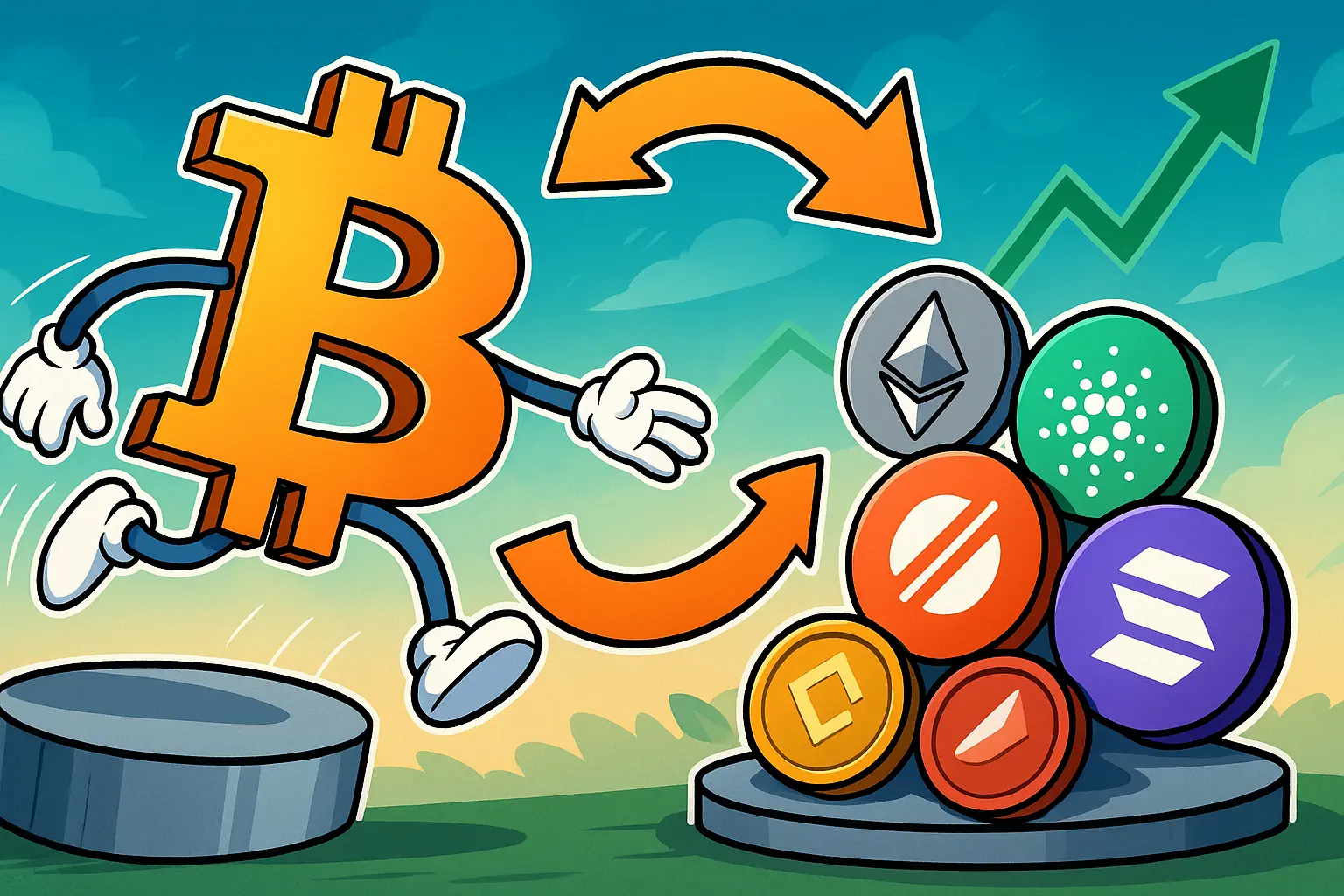How to Flip Bitcoin Into Altcoins: A Strategic Playbook for Crypto Investors
Bitcoin’s track record for delivering robust profits has made it the default asset for most crypto portfolios. As the industry’s benchmark, BTC is trusted by institutional players and remains the most valuable digital asset on the market. Still, for those seeking higher potential upside, now could be an opportune time to tactically rotate some Bitcoin holdings into promising altcoins. This guide breaks down the logic, timing, and execution of flipping Bitcoin for altcoins, and offers actionable insights for profit-taking during the next altcoin season.
Why Sell Bitcoin for Altcoins?
Investors sticking with a Bitcoin-only strategy have been handsomely rewarded in recent years. Since the post-bear market lows near $15,500, BTC has surged to over $120,000, delivering a return of about 700% at peak timing. Bitcoin’s dominance—its share of total crypto market capitalization—has climbed from below 39% to as high as 66%, underlining its outperformance over most altcoins.
However, altcoins regularly experience explosive growth phases—so-called "altcoin seasons"—where select tokens can easily outpace BTC’s gains. While Bitcoin is a bastion of stability in the crypto universe, ignoring the opportunity for tactical allocation to altcoins means potentially leaving significant profits on the table.
Spotting Altcoin Season: Timing Your Entry
An altcoin season typically lasts a few months within each four-year Bitcoin cycle. During these windows, the value of many altcoins can multiply, far outpacing Bitcoin’s performance. There are several key signals that the market may be on the verge of another altcoin rally:
- Declining BTC dominance: A recent drop from 67% to 60% suggests capital is flowing into altcoins.
- Stronger price moves in top altcoins: In July, Ethereum, Solana, and Cardano posted 30–60% gains, while Bitcoin rose about 10%.
- The Altcoin Season Index: This popular indicator sits at 49/100. When it breaks above 50, 75% of the top 50 altcoins have outperformed BTC over 90 days, signaling a shift in momentum.
Historically, these market rotations have delivered outsized returns: In the 2017/2018 altcoin boom, sector capitalization soared by nearly 18,000%, with Ethereum alone rising by over 7,500%. The next major rally in 2020/2021 brought sector-wide gains of more than 4,400%. Currently, the altcoin market has risen about 260% from its 2022 lows, with a total capitalization near $1.52 trillion—still below the $1.71 trillion highs seen in the last cycle, leaving substantial room for further upside.
How Much Bitcoin Should You Flip?
The size of your BTC-to-altcoin allocation depends on risk tolerance and portfolio strategy. Risk-averse investors may only rotate a small portion of their Bitcoin into altcoins, maintaining most of their capital in BTC to guard against volatility. This enables participation in altcoin gains without sacrificing core portfolio security.
For more aggressive traders willing to chase higher returns, a larger or even full rotation into altcoins is possible, but only with capital you can afford to lose. Remember, altcoins are highly volatile; gains and losses can be equally dramatic. Keep your emotional discipline: limiting your exposure to speculative assets can help you avoid panic selling if the altcoin rally fails to materialize.
Executing the Swap: Step-by-Step
There are several practical ways to convert Bitcoin into altcoins:
- Centralized exchanges: Transfer BTC from your hardware wallet to an exchange, then swap directly into your chosen altcoins or via a stablecoin pair like USDT or USDC, which often provides more trading pairs.
- Hardware wallet integrations: Providers like Ledger now offer apps for direct swaps without leaving cold storage, increasing security.
- Decentralized exchanges: For new or lesser-known tokens, platforms like Uniswap facilitate peer-to-peer swaps. You may need to convert BTC to ETH or SOL first, as many tokens run on these networks.
- Presale or launchpad platforms: Some up-and-coming altcoins are only available directly from the project’s site. These typically require payment in ETH or SOL.
When Is the Right Time to Rotate?
Timing is crucial. Consider these signals to help determine your entry:
- Strong BTC uptrend: If Bitcoin is in a steep rally and BTC dominance is rising, wait before rotating into altcoins.
- BTC consolidation: If Bitcoin’s price enters a period of sideways movement after a surge and volatility drops, this can mark the transition to an altcoin-led market.
- Altcoin breakout: Rapid and broad price gains across multiple top altcoins, especially after long consolidations, are often a sign the rotation has begun.
- Altcoin Season Index: A reading above 50/100 suggests momentum is shifting, but be cautious—this index is backward-looking and may trigger late.
Relying exclusively on one indicator is risky. Combining several market signals and maintaining flexibility helps avoid entering too late in the cycle.
Which Altcoins Should You Choose?
In a true altcoin season, most projects benefit, but that doesn’t mean every token is a smart buy. Research fundamentals: team, technology, market cap, and longevity all matter. Avoid coins driven solely by hype or fear of missing out.
Diversification is key. Build a basket including:
- Blue chip altcoins: Established leaders such as Ethereum (ETH), Solana (SOL), Cardano (ADA), and Chainlink (LINK).
- Mid-caps: Innovative projects often aligned with new trends (e.g., AI), generally with a market cap above $1 billion.
- Speculative plays: Meme coins, political tokens, and new presale projects. These offer higher potential returns, but carry the highest risk of loss.
If you’re risk-averse, concentrate on blue chips, using only a small portion of your allocation for speculative bets.
Managing Profit: When and How to Exit
With profits accumulating, develop an exit plan. Realizing some gains at pre-set profit levels (20%, 50%, or 100% and above) can lock in returns before the market reverses. Selling portions in tranches lets you capture further upside while securing profit.
Don’t fall into the trap of waiting for a perfect top—crypto markets can correct sharply and unexpectedly. Technical tools like the Relative Strength Index (RSI) can offer clues when an asset is overbought, but a conservative approach—selling a bit early—is often preferable to missing out entirely.
What to Do After Altcoin Season
Once you’ve exited your altcoin positions, consider your next move. While rotating straight back into Bitcoin is one approach, it’s not always optimal. Historically, the end of an altcoin season signals the final stage of a crypto bull run, often followed by sharp corrections across both altcoins and Bitcoin.
Losses after the cycle peak can reach 60–70% or more, even for BTC. For capital preservation, some investors move to stablecoins, fiat, or other asset classes, waiting to re-enter the market at lower levels. This strategy allows you to accumulate more Bitcoin in the next cycle and build wealth over the long term.




